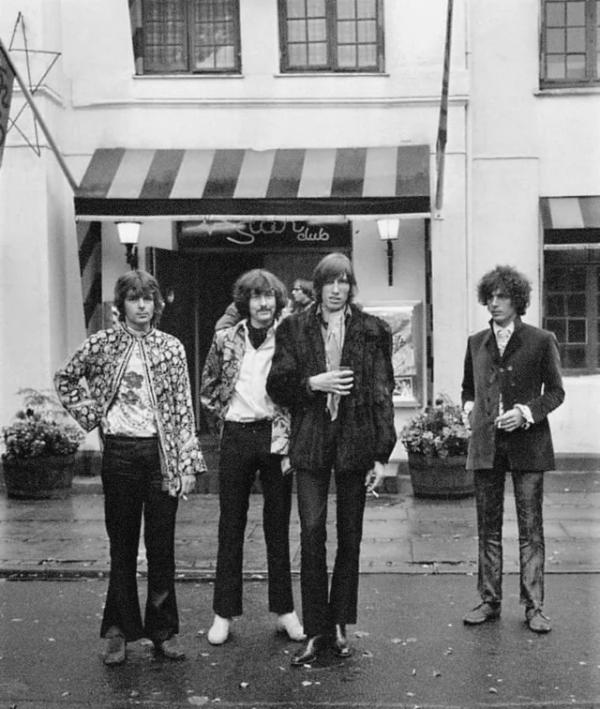News
What Genre Is Pink Floyd? Evolution of Theirs Sound
What genre is Pink Floyd? It’s a difficult question to answer about this singular band that has stretched the limits of popular music for over 50 years. As we explore in this article, while they spearheaded psychedelic and progressive rock, Pink Floyd always followed their own artistic muse across boundaries of rock, blues, jazz and avant-garde. Their sonic progression reveals an evolution as captivating as their groundbreaking concerts. Like a prism refracting different musical shades that intertwine into progressive rock poetry, the genre-defying legacy of Pink Floyd remains wholly unique decades later, continuing to inspire with individuality. So while terms like “space rock” and “high art rock” may capture slices of their style, categorizing their kaleidoscopic genius is no easy feat. Their pioneering run of 1970s concept albums effectively created their own category that transcended walls to become quintessential Pink Floyd.
Table of Contents
What Genre Is Pink Floyd?
When categorizing their sound, Pink Floyd is tricky to pin down. They began firmly planted in psychedelic rock, helping define the spacey, experimental genre alongside groups like The Beatles in their early days. But as the band progressed, their music explored songs that built and flowed in unexpected ways and ideas and stories woven into the music that transcended strict genres.
Most would describe Pink Floyd today as a progressive rock at their core. Albums like The Dark Side of the Moon, Wish You Were Here, and The Wall exemplify the genre with lengthy, sprawling compositions that unfold like long, flowing journeys of sound, philosophical lyrics, and a tapestry of instruments that surprised and delighted. The key message behind progressive rock is using the power of music to tell a story and explore weighty concepts.
That said, traces of psychedelic rock always underpinned Pink Floyd’s sound. From their early, more eccentric albums like The Piper at the Gates of Dawn to their later musically ambitious, they were always taking you on a mind-bending journey through the cosmos. Songs like “Echoes” and “Shine On You Crazy Diamond” epitomize what became known as space rock – psychedelic rock’s cosmic, meandering cousin.
Beyond those two major genres, Pink Floyd tapped into everything from folk and blues to electronic and jazz. More than anything, their style defies strict categorization. They used the versatility of rock music as a sonic tapestry woven with diverse threads. As many music critics have noted, Pink Floyd’s gift was taking the raw materials of rock and turning them into high art with a message.

Evolution of Pink Floyd’s Sound: A Sonic Metamorphosis
Pink Floyd’s musical progression is as captivating as their groundbreaking concerts. While their psychedelic rock origins always flavored their sound, they continually pushed boundaries and reinvented themselves as artists. Their sonic evolution, much like their iconic prism light refractions, reveals different musical shades that ultimately intertwine into Progressive rock poetry.
- The Piper at the Gates of Dawn (1967): Pink Floyd’s debut burst with psychedelic color, led by Syd Barrett’s idiosyncratic lyrical imagery and guitar work. Songs like “Astronomy Domine” and “Interstellar Overdrive” encapsulated the spacey ethos of the London scene. Yet hints of their experimental Pandora’s box peeked through in tracks meandering between harmony and dissonance.
- Saucerful of Secrets & More (1968-1972): With Syd departed and Roger Waters taking the helm on bass and lyrics, the band transitioned to more ambitious song structures. The bluesy expressiveness of guitarist David Gilmour also emerged on wishful ballads like “Fat Old Sun.” Extended pieces like the title track “A Saucerful of Secrets” and “Echoes” showed their interests shifting from standard pop formats toward progressive motifs.
- Dark Side of the Moon (1973): This marked Pink Floyd’s zenith both creatively and commercially. Anchored by Waters’ introspective lyrics and Wright’s textural keyboards, this intricately woven concept album flowed seamlessly between tracks probing the human experience. From the alienation of “Us and Them” to the existential crisis of “Time,” Pink Floyd distilled their artistic vision into a universally compelling masterpiece.
- Animals Onward (1977-1983): Having conquered the progressive rock summit, Pink FloydLEANED into their artistry even further in later 70’s albums. The scathing social commentary of Animals gave way to the self-reflection of The Wall and electronic experimentation of The Final Cut. More synth-orientated tones colored much of the 80’s as David Gilmour stepped forward as principal songwriter, yet their trademark guitar and keyboard interplay remained.
- Legacy (Present): Few bands can claim such a willingness to alter their musical feathers so frequently while retaining an unmistakable core identity. Much as their concerts progressed from pyschedelic light shows to dramatic renditions of The Wall, Pink Floyd’s fearless sonic exploration makes them musical alchemists as much as blank canvas for their evocative art.

The Lasting Influence of Pink Floyd
Few bands have left as vast a legacy as Pink Floyd. Their run of concept albums in the 1970s set a benchmark for cerebral, socially-conscious rock and roll. Records like The Dark Side of the Moon also showed the potential for long song formats in a singles-driven music industry. Bands could prioritize artistry over commercial viability. On stage, Pink Floyd pioneered elaborate light shows and visual production value that enhanced the power of performance.
Today, echoes of Pink Floyd’s innovation can be heard anytime a band fuses multiple genres seamlessly into a sweeping narrative. Themes of alienation and anti-establishment sentiment — hallmarks of Waters & co. — crop up routinely in modern rock. Psychedelic and progressive acts from Radiohead to The Flaming Lips to Muse owe a creative debt to the bold vision of Pink Floyd. Even in their prime, the band stood wholly unique. Decades later, the individuality of their music continues to inspire.
In Closing, pinning down the genre of Pink Floyd is no easy feat. They spearheaded psychedelic and progressive rock yet always followed their own artistic muse. Their music crossed boundaries of rock, blues, jazz, and the avant-garde as they continuously reinvented their sound. After over 50 years stretching the limits of popular music, Pink Floyd remains truly singular. To engage with their pioneering spirit, visit OtherBrick Store for merchandise capturing their kaleidoscopic genius that transcended genre walls to become its own category—just Pink Floyd.




